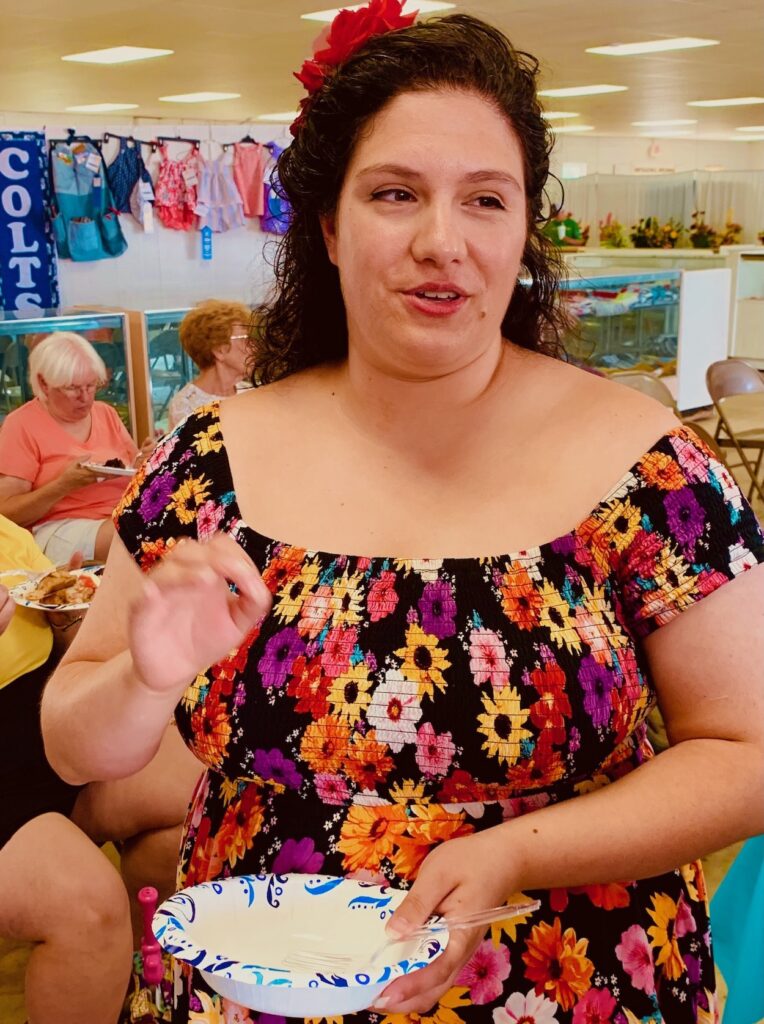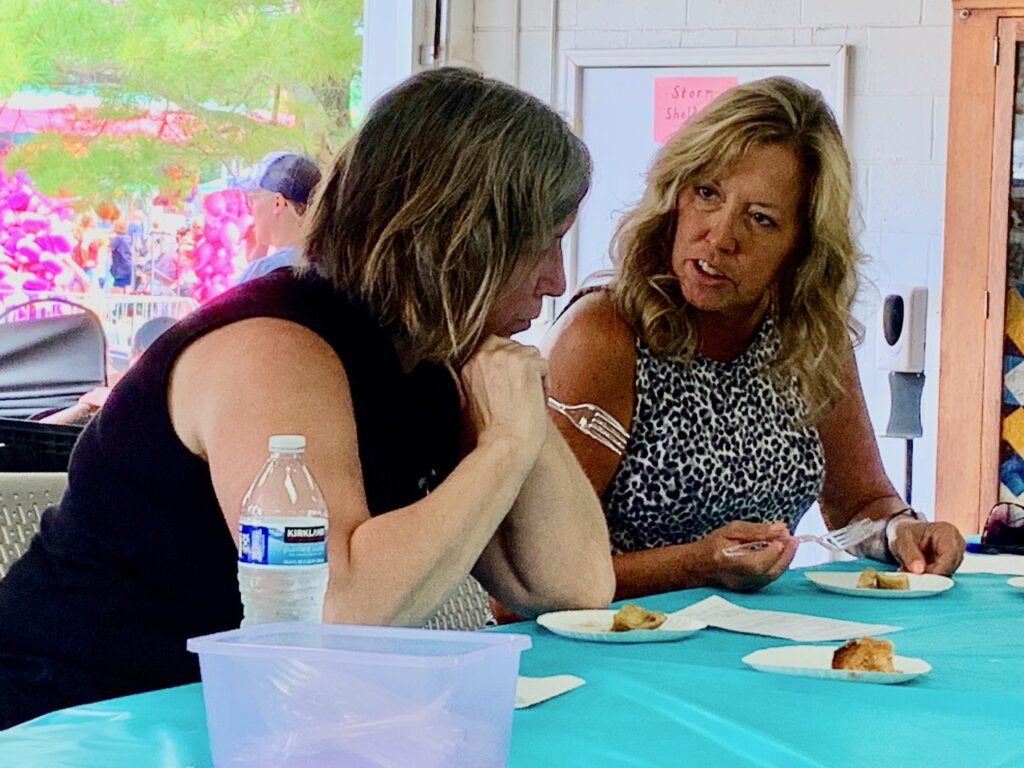By JULIE CARLE
BG Independent News
Debbie Weihl walked away with three of the four first-place awards in the Wood County Fair Meal Preparation categories on Wednesday, but the big winners were the spectators who got to taste variations on beef and noodles, “favorite” potato side dishes, bread pudding and ice cream.
Weihl earned first place honors with her beef and noodles recipe, cheesy potatoes and bread pudding. She didn’t enter the ice cream category, leaving first place to Sarah Murillo for her rose, cardamom and pistachio ice cream. Murillo’s beef and noodles recipe placed second and her raspberry bread pudding earned third place, behind Angel Mercer’s recipe.
Judges Julie Allen and Carol Hardy Garrett said all of the recipes were good this year, but they had the hardest time choosing their favorite bread pudding recipe. With recipes that included options such as chocolate, pumpkin and raspberry, “It was like comparing apples and oranges,” Garrett said. “Each one was so different and so good; it was the most difficult category to judge.”

Murillo, who has loved vintage cookbooks, clothes and movies since she watched a 1939 movie for a high school project, collects old cookbooks and women’s magazines. She scours them for interesting and vintage recipes, fashions and ideas. She even dressed in a style a bit reminiscent of Billie Holiday, complete with a flower in her hair.
The raspberry bread pudding recipe —from a 1908 cookbook—had several in the audience quietly questioning the judges’ third-place ranking. Because of the recipe’s unique fresh flavor and tangy sauces, they agreed it might have deserved the blue ribbon for its overall presentation and appeal.
At the start of the potato side dishes judging, Allen told the chefs and the spectators, “There are no bad potato side dishes.” The taste testers in the audience seemed to agree.
Again, the recipes were as varied as the bread pudding recipes. The entries included a typical creamy potato salad and a balsamic vinegar-dressed potato salad. There were a couple of cheesy potatoes, a sweet potato and green bean recipe and a cute little “potato apple” that Murillo found in a 1931 cookbook.
Murillo chose all her recipes this year from vintage cookbooks with the hope of providing something different for the judges to try. When she was considering what to make for the potato side dish, she found a 1939 recipe for Alfonso Potatoes, similar to cheesy potatoes. Deciding to go for something a little fancier, she picked the potato apple recipe that she found in the 1931 Boston Cooking School Cookbook.
“It’s a cookbook that was used to train young women who were going to be maids and cooks in wealthy homes in Boston, so everything is a little fancier. I was going for style points,” she said. Slightly disappointed that she didn’t place in the category, the judges told her that the cloves she used to make the little round potatoes look like apples had overpowered the taste of the potato.
Norma Lybarger’s balsamic-flavored potato salad came in third behind Joyce Fausnaugh’s potato side dish. Lybarger, a longtime cook and chef at Bowling Green State University, chose the balsamic potato salad because “Many of my friends don’t like the creamy, mayonnaise style potato salad. This recipe was a little different,” she said.
She boiled the potatoes and added some baking soda to the water, which was supposed to create crispier edges to the potatoes when they were roasted before combining all the ingredients.
Lybarger, a regular competitor in the culinary division at the fair, likes to look for new recipes for the fair contests, whether she looks in cookbooks or scrolls through online recipes.
She found an Asian beef and noodles recipe online and decided to enter that as opposed to a more traditional recipe from her recipe box. She opted to take a chance but knew it was maybe a bit spicy for the judges.
Lybarger was hoping to hear more comments from the judges with the goal of gaining some valuable tips for future competitions. Yet she admitted, as judges change, so do the criteria for judging, so what one judge likes this year won’t appeal to next year’s judges.
One of her best memories was in her earlier years of competitions. She entered a “Manwich” style sandwich for a beef category. “I never liked using the sauces from a can, so I had developed a recipe when I was raising six kids as a single mom. The recipe included brown sugar, yellow mustard, ketchup and bell peppers. It was a pretty basic recipe, but the judges gave me first place, which was a pretty big cash prize at that time,” Lybarger said.

Garrett said being a judge is fun, but it can be a challenge, especially when there are so many great recipes. She and Allen worked together, taking bites of each entry, looking at the presentation and the recipes they provided. “Usually we talk about what we like, and usually can come to an agreement,” she said.
The categories that are more defined, like the beef and noodles recipe, are usually a little easier to judge because the variety is not as great as when the category is wide open like “favorite potato side dish,” Garrett said. The best part of this competition is seeing the guests try the different recipes and talk about what they like best.

